submitted ago by aroch10027
Saturday, August 27, 2011
Friday, February 23, 2007
Drug policies make kids 'sentinel canaries' - report By The Canadian Press
"If you look at the adverse-drug-reaction literature, kids have been the sentinel canary for a lot of bad things in drug theory for quite a long time." - Micheal Rieder, Pediatric clinical pharmacologist.

Tuesday, November 11, 2003
TORONTO - For too long children have been "sentinel canaries" when it comes to prescription drugs, with regulating authorities requiring little or no verification that drugs are safe for children before they are used, a group of experts is arguing.
In a commentary to be published today in the Canadian Medical Association Journal, they say it's time for the evidence-based medicine rules that are used to ensure prescription drugs are safe for adults to be applied to the pediatric population.
"We live in a world of rules. And I think parents would not unnaturally assume that the rules that apply to drug approvals for them are the same as ... for their kids. And they would be wrong," Michael Rieder, a pediatric clinical pharmacologist, said in an interview yesterday.
It is often argued that it is unethical to test pharmaceuticals in children, both because they cannot give informed consent and because there may be more risk of harm from drugs during the early stages of life.
Rieder and three colleagues from the Children's Hospital of Western Ontario turn that argument around, however, suggesting it may be unethical to prescribe drugs to children if there is no evidence the drugs are safe in this vulnerable population.
"If you look at the adverse-drug-reaction literature, kids have been the sentinel canary for a lot of bad things in drug theory for quite some time. And I would argue that's not the best segment of society who should be serving that function," he said.
Traditionally new drugs are tested first in animals, then in adult humans.
Once they are licensed for use, however, doctors can and do prescribe them to children -- but without the benefit of clinical data to show if they will be effective or what the appropriate dosage should be.
That is largely guesswork. And it isn't always right.
Rieder noted a drug called theophylline, once commonly used in the treatment of asthma, was prescribed for some time to children before it was realized that it wasn't working.
It turned out that kilogram for kilogram, children required higher doses of the drug than adults.
With other drugs, however, adult doses are unsafe for children and must be cut back.
"One of the problematic issues in efficacy is that for many drugs, we have an idea what the best dose could be. But we could be wrong. Like, totally wrong. And there's very little way of finding out," Rieder said.
The associate chief of research at the research institute of Toronto's Hospital for Sick Children agreed more pediatric drug trials need to be done.
But Denis Daneman suggested the field is evolving rapidly, with a growing numbers of trials being undertaken.
"I'm very comforted by the fact that people have increasingly talked about it," Daneman said.
"If you actually look at the number of clinical trials going on in pediatrics -- clinical trials involving medication -- it's quite substantial."
Rieder agreed, but noted the work is mainly done on new drugs companies are trying to bring to market, not existing drugs that are being prescribed for children without the support of clinical data.
In part that's because of a U.S. provision that grants drug manufacturers an extra six months of patent protection for a drug if it is tested in children.
"Six months sounds like nothing. But to a moderately expensive U.S. drug or European drug, it's hundreds of millions of dollars in patent protection," Daneman said.
The provision is helping to change the field, the commentary said.
But as yet no similar provision has been adopted here.
And the authors argue Canada shouldn't be content to simply ride on American coattails.
"Is it fair for us to let the U.S. haul the freight on this? As a policy, I think it shows less than noteworthy leadership," Rieder said.
"We're not hauling our weight as a sovereign state."
Tuesday, February 20, 2007
Government of Nova Scotia planning to privatize adult and child welfare programs to for profit company involved in Enron scandal
 Nova Scotia Community Services Minister Peter Christie. The
Nova Scotia Community Services Minister Peter Christie. The 
Firms bid on welfare, housing revamp
By BRIAN FLINN
The Daily News,
Only two companies want a contract to overhaul the Community Services Department, and the NDP says one of them botched a similar project in
IBM Canada and Accenture were the only firms to submit proposals by the Tuesday deadline. Community Services Minister Peter Christie said the government will now evaluate those bids to see if either meets the criteria.
He said the province doesn’t have to accept either bid if it doesn’t like them.
The
The
The company that overhauled welfare in
Andersen Consulting spun off from Arthur Andersen in the 1990s and severed its last ties with the accounting giant after that company was accused of cooking the books in the Enron scandal in the
Christie said he’s aware of criticism of Accenture’s track record in
“We’ll evaluate all of those things,” he said.
NDP: poor will be hurt
NDP community services critic Jerry Pye said no private company can find savings in the department without hurting the poor.
“There’s no way,” he said. “It either comes through reduction of services or reduction of staff.”
Staff cuts would impact poor, abused and neglected Nova Scotians who rely on the department, he said.
Pye said the government might believe it’s saving money by having a consultant provide a new computer system to administer welfare. But the system would cost more money in the long run if it creates a perpetual reliance on the private partner.
Other savings could be found from making applications so difficult that people drop off the welfare roll. Pye said a highly automated system wouldn’t really serve the province’s poor because few have computers and Community Services refuses to pay for telephones for people collecting welfare.
bflinn@hfxnews.southam.ca
NSGEU (Nova Scotia Government Employee's Union) President's letter to the Hon. Peter Christie, Minister of Community Services

http://www.nsgeu.ns.ca/index.html
May 29, 2002
Hon. Peter Christie
Minister of Community Services
P.O. Box 696
Halifax, N.S., B3J 2T7
Dear Mr. Christie:
Re: Client Services Delivery Initiative
On May 17, 2002, Deputy Minister Cramm informed staff that your Department had decided not to accept either of the two proposals received for the Client Services Delivery Initiative (CSDI). He also indicated that the Department was as committed as ever to CSDI and to improving and modernizing your service delivery approach. To help design and implement the new service delivery approaches planned under CSDI, he further explained that you were now looking at a range of new and previously considered alternatives.
In light of my April 30, 2002 letter to you, I am writing to clarify how exactly neither of the two proposals received met the requirements that you set out in the RFP and what your alternative plans now will be to carry out this initiative. If your Department is as committed as ever to CSDI, will there still be some role for a private, for-profit partner(s)? And if so, what will that role be and how will you select that partner(s)?
We think this recent development would be an excellent opportunity to follow
our principal recommendation to you that we have made on several occasions,
namely, to suspend this initiative until there has been a full opportunity for
meaningful information-sharing and consultation with our members and this
Union as well as with clients of the Department and their organizations.
We urge you again to reconsider how a business or corporate model for
making a profit fits with human services that are operated by a government
department. We hope you would now see that the experience and expertise
for improving the Department lie first and foremost with your own staff and
with the people who use your services.
…. /2
Hon. Peter Christie
Minister of Community Services
Page Two
I also want to remind you again of your government’s commitment to the Five Point Plan for Quality Public Service Protection. This Plan should be observed in any new plan to proceed with CSDI.
As stated in my earlier letter, I would like to meet with you in the near future to elaborate on our questions and concerns about this initiative and about what alternatives or options may be now be considered for it.
Yours sincerely,
Joan Jessome
NSGEU President
c. Premier John Hamm
E.G. Cramm, Deputy Minister, Department of Community Services
Jerry Pye, NDP Community Services Critic
David Wilson, Liberal Community Services Critic
Dr. David Williams, Nova Scotia Association of Social Workers and The Social Justice Network
Jeanne Fay, Community Advocates Network and Dalhousie Legal Aid
Joan Jessome, President, NSGEU
Speaking Notes for Joan Jessome, President,
Nova Scotia Government and General Employees Union
At the Joint Media Conference of Concerned Organizations about the Client Services Delivery Initiative (CSDI) Of the Department of Community Services
Monday, April 29, 2002 , Uniacke Room, 11:00 a.m.
During the past year, we have listened to our members who work in the Department. We have participated in the so-called “vendor consultation process” of the Department about this initiative. We have read the documents provided by the Department about it. And we have talked with other organizations.
From all these efforts, our position has remained the same. We continue to believe that the whole initiative should be suspended and put on hold until there has been a full opportunity for meaningful information-sharing and consultation with our members and this Union as well as with clients of the Department and their organizations.
We have a long list of questions and concerns that the Department has yet to answer. For example, why is the Department seeking a private, for-profit partner to help it transform or modernize the operations and services of the
Department? How does a business or corporate model fit with human services operated by a government department? Why does the Department not feel the experience and the expertise for improving the Department notlie first and foremost with their own staff and with the people who use
their services. How will quality of service and effectiveness be improved with less direct contact with clients or potential clients, possibly using a call
centre?
We have outlined our questions and concerns to the Minister and Deputy Minister of the Department and they have refused to meet with us in any meaningful way to address our questions and concerns. In reply to our first
letter to the Department, the Deputy Minister committed in writing on June 12, 2001 to us: “….that before any formal request for proposal is made we
will have addressed these issues and will keep you apprised accordingly.” THIS HAS NOT HAPPENED AND THERE IS NO APPARENT
WILLINGNESS FROM THE DEPARTMENT TO DO SO.
I also want to remind the Department and the government of their supposed commitment to the Five Point Plan for Quality Public Service Protection which includes open public consultation, clear demonstrable evidence of the benefits of any proposed privatization, public tabling of any documents
about any initiative and protection of the rights and benefits of employees.
THE DEPARTMENT HAS YET TO ACKNOWLEDGE EVEN THE EXISTENCE OF THIS PLAN, LET ALONE THEIR COMMITMENT TO HONOURING IT.
There is no evidence here or elsewhere that a public-private partnership with vital community and income support services will anything but bad news for clients, workers and taxpayers. I again call upon the Department of Community Services to suspend this CSDI project and instead work with
clients and us as equal partners in truly making positive progressive changes.
Former street kid: older teens at risk

10 MAY 2002
http://www.cyc-net.org/
Youth in three Canadian provinces fall through the legislative cracks
Three provinces have ignored a recommendation to broaden their Family Services Acts to protect more at-risk teens, says a former street kid who worked on a Youth In Care Network study. The act doesn’t define 16- and 17-year-olds as children, which means kids are falling through the cracks and living on the streets, says Roch Longueepee.
He ended up on the street when he was 16 because, he says, the province wasn’t obligated to continue to care for him.
The National Youth In Care Network released a report this week that estimates about 3,400 teens in Nova Scotia, Newfoundland and Ontario are denied protection each year.
Longueepee was part of the Nova Scotia Council For The Family, which was asked by the province to submit a report recommending changes to the Family Services Act.
The council said in 1999 the province should change legislation to include 16- and 17-year-olds as children. The UN Convention on the Rights of the Child, which Canada ratified in 1991, defines children as persons up to 18 years old.
Community Services Department spokesman Steve Bone said the province cares for 393 youth in that age group and provides income assistance to another 250. “There are services being provided,” he said, but he acknowledged the province isn’t legally obligated to provide this help.
As part of the council’s report, Longueepee, now 32, met kids who had been in the care of the province until they turned 16. Some lived in abandoned cars, while a boy named Julian lived in an alley beside Park Lane. “He was sleeping on a concrete slab and rats were crawling in there through the night,” said Longueepee.
“It’s really distressing to think we have kids and youth living in conditions like this in our country. There’s no excuse for it.”
By BEVERLEY WARE
http://www.canada.com/halifax/news/story.asp?id={5FB072A8-FC85-46D0-95A6-ED9C4CC4E7EF
Comments will be published in CYC-NET's daily e-mail discussion group.
which you may have missed since your last visit.
Statement Delivered at the Justice Minister’s Roundtable on Justice Issues

May 15, 2002 – Parliament Buildings, Ottawa Matthew Geigen-Miller, Director of Education and Communications National Youth In Care Network
http://www.youthincare.ca/
Mister Minister,
Thank-you for this opportunity to participate in today’s discussion. We have followed
the advice in the invitation to attend this meeting and have identified two key issues
which we will bring to your attention.
National Youth In Care Network is a unique youth-run organization. We are driven by
young people in and from “government care”. Most of our members come from the child
protection system, but we also have members with experiences in other forms of
government care such as mental health and young offender care. Our board of directors,
volunteers, leaders, and all of our staff – save one administrator – are young people, aged
14 to 24, who are or have been in care. There are over 62,000 children and youth in the
care of Canadian child welfare authorities. National Youth In Care Network was founded
in 1986, and incorporated in 1990 as a registered charity.
First, protection from victimization and abuse is a significant concern. Virtually all of
our members have been seriously victimized at some point. Most experienced child
abuse and family violence in the home – in many cases that is the direct cause of their
entry into the child protection system. Sadly, many more are victimized again within the
child protection system.
There are children across Canada, right now, who are being abused in child welfare foster
homes and group homes. They were taken out of their family homes by force – by no
choice of their own – and placed in the care of government child protection authorities.
They were separated from their families, natural advocates, and support networks. They
are both traumatized by abuse, and also stigmatized by it: Many people still
misunderstand the child welfare system, and believe, mistakenly, that children in foster
homes and group homes are “bad”, or have done something wrong. Plainly: these
children and youth are exceptionally vulnerable. The Law Commission of Canada report
on institutional abuse was a promising step, but more work is urgently needed. The
Department of Justice has a role to play in assisting our organization and others across
Canada in raising awareness of these problems, and in implementing measures to
improve prevention, detection and investigation, and prosecution of institutional abuse.
means having a fighting chance at being heard when governments and courts make
decisions that have immediate and weighty impact on our lives.
At the individual level, children and youth need legal counsel in a variety of settings. We
are often un-represented in family court proceedings, which determine whether or not we
will become wards of the state. We are un-represented when we appeal decisions to
terminate services to us – decisions that could leave us out on the street before we reach
adulthood. And, we are un-represented when the child welfare authorities have been
abusive or negligent in their care for us. Deep cuts in many provinces’ legal aid
programs has made it more difficult than ever to secure adequate legal representation.
The right of participation in decisions for children in care is guaranteed, both in the UN
Convention on the Rights of the Child, and in each province’s child protection statute.
This right, however, is rarely invoked because legal counsel is not accessible.
At the systemic level, individual young people, youth in care groups and other
stakeholder groups are in desperate need of resources to challenge legislation and policies
that violate our basic rights. The federal government has, over the years, significantly
reduced transfer payments to the provinces for social welfare programs, and reduced
accountability measures for the funds that are now transferred. Accountability through
public reporting and transparency does not serve our members. We are a deeply
stigmatized group, and do not necessarily court public sympathy or favour. Thus, for
many of our members, justice and accountability can be achieved only through the courts.
It is the prerogative of this government to determine how much money will be transferred
to the provinces for social welfare programs, and whether or not strings will be attached.
However, we want the federal government to recognize that it has a duty to compensate
for this withdrawal of funding and accountability with a counter-weight. If this
government will not impose conditions on the provinces in return for funding, then, at the
very least, the Charter of Rights and Freedoms should act as a safeguard against rights
abuses. Federal funding, perhaps in a program similar to the current Court Challenges
Program, must be made available to ensure that disadvantaged groups have the
opportunity to participate in important court proceedings, and to ensure that charter
challenges to all laws – not just federal – are accessible to economically disadvantaged
individuals and groups.
We appreciate an opportunity to be heard and participate in this discussion. National
Youth In Care Network is hopeful that this discussion will mark the beginning, not the
end, of this dialogue.
Thank-you.
Monday, February 19, 2007
September 1rst, 2006 Statement -International Survivor Groups Vow support for Polygamist Victims

Warren Jeffs appears in Las Vegas Justice Court on Thursday morning. Jeffs, who was escorted by members of the Las Vegas Police Special Emergency Response Team, is accused of marrying a girl younger than 18 to an older man and insisting she procreate against her will. Photo by Clint (www.reviewjournal.com/.../Sep-01-Fri-2006/news/)
PUBLIC STATEMENT ISSUED ON BEHALF OF :
Telephone: (902) 443-9341, ext # 62
Email: info@restoringdignity.org
Tapestry Against Polygamy
Tel: 801-467-2467
Email: vickyprunty@aol.com
Altering Destiny through Education
Tel: 250-428-9688 email:
Email: dlprice@uniserve.com
Stop Polygamy in Canada
Telephone: 780-768-2180 phone/fax
Email: mereska@digitalweb.net
SNAP (Survivors of Those Abused by Priests)
Tel: Phone: (314) 566-9790
Email: SNAPClohessy@aol.com
On Tuesday, August 29th, 2006, 50-year-old fugitive Warren Jeffs, leader of Fundamentalist Latter Day Saints (FLDS) was arrested without incident. Mr. Jeffs was wanted “for the alleged sexual assault of a minor in 2002 and for one count of conspiracy to commit sexual assault with a minor that same year. The alleged offenses took place in the vicinity of Colorado City. Additionally, Jeffs is wanted In Utah as an accomplice to rape.” “The capture is the 453 rd arrest of an FBI Most Wanted figure since the program to catch fugitives was established in 1950. “ (http://www.fbi.gov/page2/aug06
This is a major capture for those of us in the movement against institutional child abuse. The man in police custody here still wields a lot of control on the polygamist following; that said, the lives of the gross amount of children he is fathering (over 250 children) are already damaged and will have a lot more damages to contend with after the prosecution is over. The following of the polygamist movement which would include Warrens Jeffs groups and other polygamist groups is said to be 100,000 members.
The polygamist lifestyle is socially regressive and male dominated, where women are subservient to men. Polygamist survivors claim that while in compounds run by FLDS orders, they suffered harsh treatment and sexual abuse. Female children barely reaching their teen years are wed and are bearing children to men double and triple their age. Many boys and young men are being forced out of the polygamist compounds by the polygamist leaders in a bid of competition for young females. There are stories of the older youth that were of age to rent, were renting spaces big enough for groups of ten. The reports go on to say that the properties were trashed by these children and young men, because they had not experienced independence and were not prepared for it. There have also been reports of corruption which follows young men who leave the polygamist compounds. On August 2, 2006, William John Aldrich Green, an 18-year-old son of imprisoned polygamist Tom Green, was arrested for investigation of two counts of rape of a child for allegedly having sex with a 13-year-old girl he met on the Internet. These are learned behaviors, not the acts of an evil person. The evil is the lifestyle they were born into, not of their making or choosing. There have been also allegations of sexual abuse of male children laid against Polygamist leaders. There even rumors of a mass gravesite of children buried in unmarked graves in the state of Utah.
Beyond all this, there have been reports from polygamist members who make claims of positive experiences.
It is a salient feature in the response of many survivors from various forms of institutional child abuse to adapt various methodologies in order to deal with the impact of institutional child abuse. This does not mean that what these people experienced (whether they would agree it is or not) was not abuse. It was then; it is now and will be considered abuse in the future.
There were times in the history of our countries that practices such as racial discrimination, child labor, child exploitation, child abuse, inequality of gender, and various other violations of human rights were rampant. Our countries have since adopted constitutional rights to protect the most vulnerable of society, children, women, marginalized groups and cultures. The success of those rights will be under minded if we cannot, as a society, understand the context of history behind movements like the polygamist lifestyle. The polygamist lifestyle cannot be compared to such genres as racial equality, same sex marriage, gender equality, AIDS movement, etc.
The concept of one father and many mothers in one family bearing scores of children represents the displacement and disconnection of countless young lives. How will these children fare in society if they are to leave these compounds and come to live on the outside? How will they deal with the deficits that come with the displacement and disconnection in a new life and society? For those who survive, and are released from their dreadful existence behind those compound walls without the proper tools to fend for themselves, they will be unprepared for adult life. Who will fend for them then?
Jean Jacques Rousseau wrote in his works “The social contract”:
“To renounce liberty is to renounce being human, to surrender the rights of humanity and even its duties. For they who renounce everything no indemnity is possible. Such a renunciation is incompatible with human nature; to remove all liberty from their will is to remove all morality from their acts.” (Note: political incorrect terms have been replaced with politically correct terminology)
Any person trapped inside such a compound cannot reasonably make an informed decision as to whether or not it is a morally sound or a healthy lifestyle. The members of the polygamist compounds are cut off from all communication form the outside, television, internet, and telephones are prohibited. For so many growing up in these compounds, the polygamist lifestyle is all they know and they are taught to distrust and to fear the outside. Fear and deceit are hallmark features of oppressors.
Clearly, any practice which is so socially regressive, male dominated, where women are subservient to men is oppressive.
Polygamy has a long history as many other forms of institutional child abuses have. Such examples are the child migration and home children schemes carried out in both our countries.
“Child Migration was devised as offering underprivileged children a 'new start' in a fresh country. It was also a way for Britain to solve its social problems. It was a means of 'seeding the empire', and was pursued with missionary zeal. The children were not adopted out, nor were they, in the usual sense of the word, fostered. Though government sponsored, the sending and receiving agencies were for the most part Christian charities who shared this goal and saw their work as inherently noble.” “The receiving Countries shared Britain’s enthusiasm. The desire of the Dominions - in particular Australia, Canada, and Rhodesia (now Zimbabwe) to increase their white, preferably Anglo-Saxon populations coincided with the desire of the mother country to rid itself of excess children of the lower social orders." – Alan Gill “Children of the Empire”
These practices started in the United States during the colonial period. Children were used for child labor and were brutally physically and sexually abused.
Additionally these children were shipped in from outside countries, stripped of their identities and left displaced from their families and countries. Since that period, other forms of institutional child abuse have included residential school settings for the deaf, blind, mentally challenged, , youth detention centers, sport groups, social groups such as the boys and girls clubs, medical institutions, clergy sexual abuse, group homes, foster homes, daycare centers, etc ..
We encourage the LDS church to come forward now and take responsibility for its role in the polygamist movement. While the church has stated a number of times that it s has disavowed polygamy practices by its members, it has never apologized. It is a fact that polygamy is a derivative of LDS beliefs, and it is where it was founded from. In Canada our Federal Government has apologized to the Japanese for its role in the mistreatment and discrimination of their people, Canada and even some churches have apologized to the First Nations people for their mistreatment and abhorrent human rights violations against their people, to name a couple. Criticism is not always easy, but it is necessary, it is as necessary as pain in the human body. It calls our attention to what Winston Churchill once referred to as “attention to an unhealthy state of things.”
Failure to do so encourages the practices such as polygamy to continue. The acknowledgement and an apology of that history are fundamental to change.
We are not advocating for the end of the LDS church, churches like many things in life have their place in society. However, when the beliefs or practices of institutions such as churches begin harming others, we must never be afraid to question and challenge those beliefs and practices which threaten our rights and freedoms.
So by tragic necessity we have inherited the struggle of our forbearers, those rights granted to us through them. The rights and freedoms of our constitutions will not be afforded to us so long as we are willing to witness or permit the slow undoing of those human rights to which our countries have always been committed.
A clear definition of what institutional child abuse is has never been established anywhere in the world. A legal definition is also needed to help establish public education, understanding and identifying the hallmarks of institutional child abuse. Such a definition would greatly assist in ensuring any institution which is charged with the care and/or protection of children and harms them will be held accountable. Such a definition would help to establish a standard of diligence and care for our most vulnerable.
States such as New Hampshire have already begun establishing legal definitions of institutional child abuse. This is a positive first step in dealing with the larger problem.
There are a number of concerns from the groups involved in the anti-polygamist movement. Mr. Jeffs and his membership have a history of violence. There are concerns of safety for potential witnesses who may appear before the courts against Jeffs. There is also a concern that there may be an uprising as a result of Jeffs's arrest by pro-polygamist supporters or compounds. We also foresee that because of the profile of Jeffs Case, that victims from the polygamist compounds may see this as a safer time to attempt an escape.
Additionally, with the majority of the population of state of Utah being Mormon, there are serious concerns that the justice system in that state will not be impartial. Earlier this week, police were reported by CNN reporters as supporting Warren Jeffs and the polygamist compounds in Colorado. This is a problem which will require strong leadership.
We believe that as groups who are involved in eradicating institutional abuse generally and helping victims of institutional abuse that we have a collective responsibility to inform the authorities and public of what lay ahead on this arrest and that there are support groups who are willing and able to help those who are trying to escape the lifestyle of polygamy and to ensure the authorities are working with these support groups to help move the judicial process along without incident.
On the same note we want to do so in a non-fear mongering manner to prevent it from becoming merely a forum for invective. The focus here is truly the safety of witnesses and the safety of women and children trapped in these compounds.
We hope that Mr. Jeffs will do the right thing and cooperate with the judicial process in order to spare his victims any lengthy drawn out court proceedings. Prolonging the process for his victims will not weaken our resolve in ending institutional child abuse. We are united in our support for the victims. The book of proverbs says that those who trouble their own house will inherit the wind. Justice will prevail.
We encourage the Attorney General offices in the State of Utah and in the province of British Columbia and the respective law enforcement agencies to work with us in providing support and protection to potential witnesses testifying against Warren Jeffs and victims who may be attempting an escape from the polygamist compounds. To those people in polygamist compounds struggling to break the bonds of oppression, we pledge our best efforts to help them, for whatever period is required.
This will not happen without everyone working together to ensure the strong are just and the weak safe.
May God bless the victims and their families.


Teen sues sect leader in effort to have contact with mom
http://www.knoxnews.com/kns/national/article/0,1406,KNS_350_5367608,00.html
By BROOKE ADAMS
February 20, 2007
He last spoke to his mother, Elsi Jessop, two years ago and has no idea where she is.
Now, the 18-year-old Jessop has sued Jeffs in hopes a judge will order the sect leader to put the teen in contact with her. The lawsuit, filed Tuesday in 3rd District Court in Salt Lake City, also seeks damages for destroying their relationship.
The lawsuit alleges that Jeffs has "systematically" destroyed hundreds of families as leader of the Fundamentalist Church of Jesus Christ of Latter Day Saints by driving out men he deems unworthy and boys he views as competition for plural wives.
The Diversity Foundation, which works with many of those teens - the so-called Lost Boys - estimates that since 2002 as many as 400 have fled or been kicked out of their homes in Hildale, Utah, and Colorado City, Ariz.
The two towns are the home base of the FLDS church, which adheres to a 19th-century version of Mormonism that includes the practice of plural marriage. The mainstream Church of Jesus Christ of Latter-day Saints publicly disavowed polygamy in 1890 and now excommunicates those who espouse or practice it.
Like Jessop, many teens from the twin towns have been cut off from their families, but others say they have some contact with their parents.
Jessop has written two letters to Jeffs, who is incarcerated at the Purgatory Correctional Facility in Hurricane, Utah, pleading for information about his mother's whereabouts.
There has been no response, said Roger Hoole, Jessop's attorney.
"There is only one person in the world who can authorize this mother to contact her son, and that is Warren Jeffs," Hoole said. "We're asking him to do it and, absent that, we'll ask the court to order him to do it because there is a pattern of minor children being cut off from their parents and that is untenable."
Jeffs instructs the FLDS to cut off ties to family members who apostatize from the faith.
Jessop was 10 when Jeffs expelled his father from the faith and reassigned his mother to then-FLDS bishop Fred Jessop. At 13, Jessop ran away for several days, joining older friends in Hurricane to party; an older brother tracked him down and told the boy Jeffs wanted him out of the community.
For the next two years, Jessop bounced between homes of friends and relatives, landing in juvenile court at least three times. Each time, he was ordered to rejoin his mother, but, the suit claims, Jeffs would not allow it and Jessop ended up staying with relatives.
In an interview with The Salt Lake Tribune in December, Jessop said his behavior caused ongoing friction; he smoked, drank and wore short-sleeved T-shirts, which are taboo among the FLDS. He was pegged as a troublemaker and "evil."
When Jessop was 15, he left the FLDS community and turned to the Diversity Foundation for help.
The foundation, based in South Jordan, Utah, is the creation of Dan Fischer, a successful dentist and entrepreneur who left the FLDS church about 15 years ago.
Jessop insists that, despite his wayward behavior, his mother loves him and wants to have contact with him - if only Jeffs would permit it.
Jeffs is scheduled to stand trial on April 23 on two felony charges of being an accomplice to rape for conducting an arranged marriage between a 14-year-old girl and a 19-year-old man.
(Distributed by Scripps Howard News Service, www.scrippsnews.com.)
| | Copyright 2007, Knoxville News Sentinel Co. |
Help for children being abandoned in Colorado City
http://www.abc4.com/news/local/story.aspx?content_id=3a613deb-b9e0-42dc-92f6-05d20a101e35
There's a new exodus from the polygamous communities along the Utah Arizona border. It's smaller than the exodus of a few years ago when Warren Jeffs transplanted some of his people to Texas to build a new community and temple on the YFZ Ranch.
This time just over a dozen of his most faithful including some relatives have been moved out.
One other wrinkle to this exodus: Jeffs apparently ordered a handful of children abandoned. Parents allegedly left kids (usually young boys in their teens) not only in their communities, but also in Hurricane, St. George and even Las Vegas.
Stefanie Colgrove said these teens are ill equipped to survive in the outside world, "They don't even know how to take care of themselves."
As others left Hildale, Colgrove moved back. She's took over a large house recently occupied by John Gilbert Jeffs and invited all those left behind to come and stay with her. Its a place where she said, "somebody can love you, make sure you get your laundry washed, and have a family again. That's the essence of it right there. If you're raised in a family and then all of a sudden it's removed, you've lost something serious not just a mom and dad, but a whole family."
Explaining why she's undertaking such a daunting task, Stefanie Colgrove said, "This is my community. These are my people."
In fact she is the great-granddaughter of Leroy S. Johnson, the man who founded Colorado City and became the leader of the largest polygamist group in North America.
She moved away when she was 20 but always knew she would return.
Now she is sickened by what she sees. Colgrove said she was raised in a community where neighbors talked to each other and trusted each other.
Now she said, Jeffs has turned neighbors and even families against one another. Where the town was once open, there are now walls, fences, "no trespassing" signs and even surveillance cameras. She is especially angry that so many families have been torn apart.
Colgrove is calling her shelter "Affinity Home" -- a place that will restore hope to children who have been discarded by their own.
| To Email: | To Email is Required. A valid email address is required. |
| Your Name: | Your Name is Required. |
| Your Email: | Your Email is Required. A valid email address is required. |
| Message: | |
| | |
You can send a story to multiple email addresses by separating the email addresses with a semicolon (;)
This station will not store your email address or your recipient's email address or use them in any way.


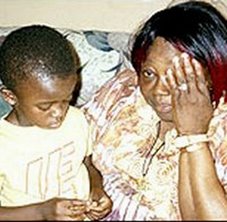

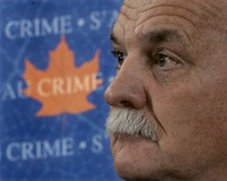

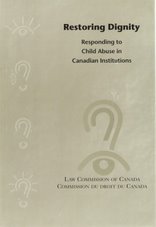



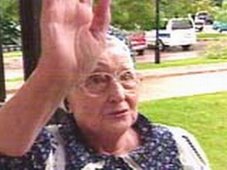

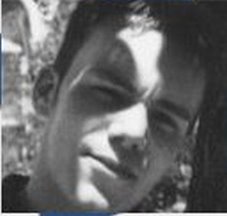
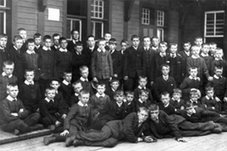
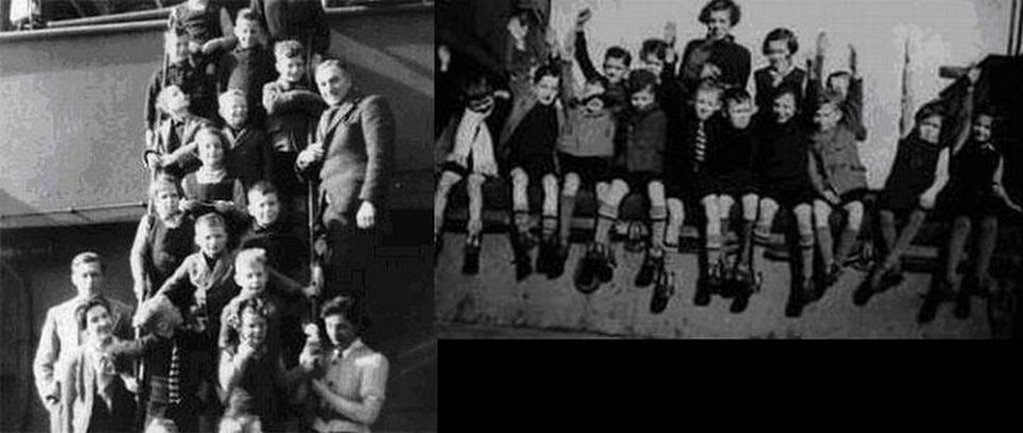
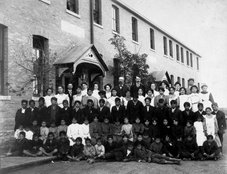
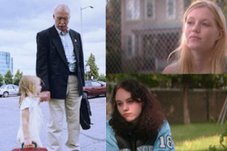

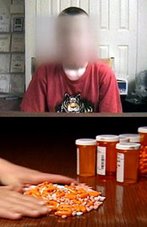
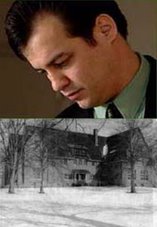
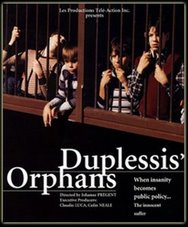


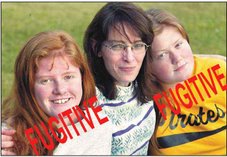

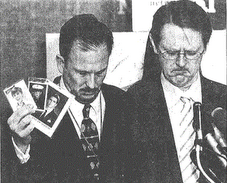


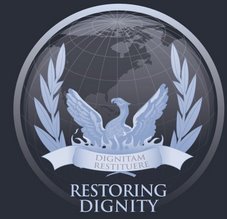

[–]aroch10027[S] 206 points ago*